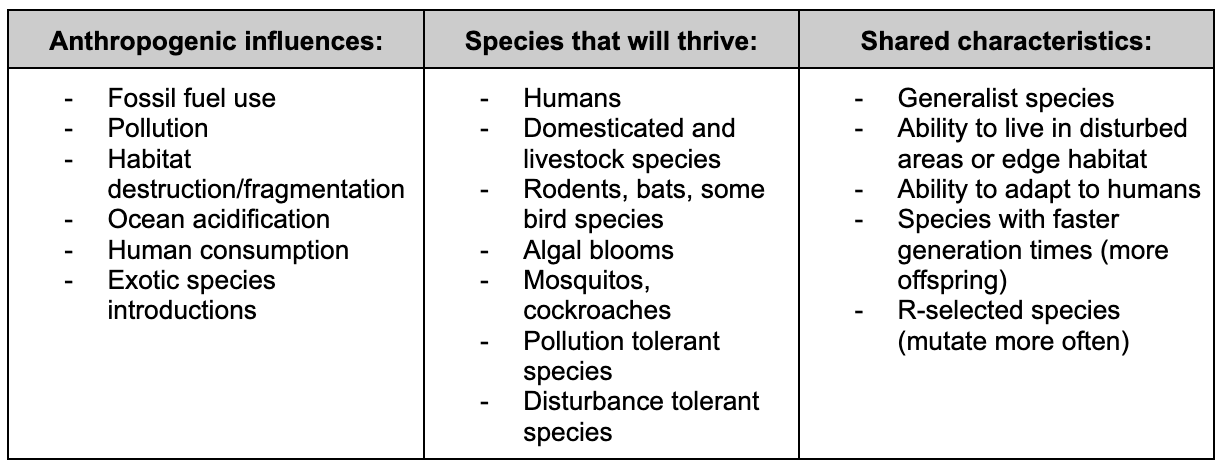Chapter 12: Global Ecology
Vocabulary:
- Rewilding: conservation effort focused on restoring sustainable biodiversity and ecosystem health by connecting and preserving wild areas, and protecting or reintroducing keystone species/apex predators.
- Restoration: returning a habitat, environment, or ecosystem to its original condition or membership, prior to a disturbance (often anthropogenic)
Outline of Notes:
- General rules of context:
- Diversity hotspots in hills and low mountains
- Rock type/geologic history and landcover
- Latitude and longitude affect patterns
- Different goals of restoration and reclamation:
- Reclamation: prioritize increasing ecosystem functioning, not structure
- Restoration: return ecosystem to its original state as much as possible
→ Ideal, but usually not realistic
- Rewilding: conservation effort focused on restoring sustainable biodiversity and ecosystem health by connecting and preserving wild areas, and protecting or reintroducing keystone species/apex predators.
- Goals:
- Slow/prevent extinctions
- Restore ecosystem health
- Minimize human intervention and management
- Let nature take care of itself to restore damaged ecosystems
- Goals:
What Does the Future Look Like?
- Anthropogenic influences shape ecology
- Some species will thrive due to these anthropogenic influences
- These species share common characteristics


